Bubble Nebula Wide Field in SHO
Click images above for full size versions
September 13, 2025
This image shows a wide field view of the region around the Bubble Nebula in Cassiopeia. I’ve imaged the Bubble Nebula a few times. It inhabits a very busy patch of sky. Several other deep sky objects show up nicely in this image, and are also shown in an annotated image of this region:
- The Bubble Nebula (NGC 7635) is the most famous object in this image, just above and right of centre. The Bubble is surrounded by Sh2-162, a billowy, textured cloud of glowing hydrogen gas. Both are between 7,000-11,000 light years away.
- The open cluster M52 sparkles to the upper right of the Bubble, and is located 5,000 light years away. It is one of my favourite small telescope open clusters.
- Sh2-161 is at lower right, also around 9,100 light years from us. NGC 7538 (a.k.a. Sh2-158) is the bright patch along the bottom edge of Sh2-161.
- The large Sh2-157, the Lobster Nebula, is left of centre. Just beneath the lobster’s “claw” is open cluster NGC 7510.
- Almost dead centre in this image is Herbig-Haro 170 (also known as MWC1080). It is the small orangish patch of nebula and surrounds a very young star. Herbig-Haro objects are associated with newly born stars, and form when gas ejected by the stars collides at high speed with surrounding clouds of gas and dust.
- Sh2-159 is a small patch of nebulae lying below the Bubble in this image.
Best of all is the tiny ring in the upper left corner of the image. It is the exceedingly faint supernova remant Cas A!
Tekkies:
Acquisition, focusing, and control of Paramount MX mount and other equipment with N.I.N.A. and TheSkyX. Unguided. Focus with Primalucelab Sesto Senso 3 on the Sky-Watcher stock focuser. Equipment control with Primalucelab Eagle 4 Pro computer. All pre-processing and processing in PixInsight. Acquired from my SkyShed in Guelph. Acquired under average transparency and seeing and moderate to strong moonlight from September 8 to 19, 2025.
Sky-Watcher Esprit 70 EDX refractor, QHY367C Pro camera.
L-Synergy Filter: 259 x 5m = 21hr 35m
L-eXtreme Filter: 187 x 5m = 15hr 35m
Total: 37hr 10m
Preprocessing: The WeightedBatchPreProcessing script was used to perform calibration, cosmetic correction, weighting, registration, local normalization, integration and Drizzle integration of all frames (Fast Drizzle, Scale=2x, Drop Shrink=0.9).
Gradient Removal: DynamicBackgroundExtraction was applied to the two masters (L-Synergy = SOO; L-eXtreme = HOO).
SHO Master Creation: The DBExtract script was use to create S, H and O masters from HOO and SOO. The S, H, and O were combined using ChannelCombination with S assigned to red, H to green and O to blue.
Deconvolution: BlurXterminator was applied to the SHO image using an automatic PSF, star sharpening set to 0.50, and non-stellar sharpening set to 0.9.
Linear Noise Reduction: NoiseXterminator was applied with Amount=0.95 and Detail=0.5
Stretching: HistogramTransformation was applied to make a pleasing yet bright image. Approximate background level after stretch was 0.10
Nonlinear Processing
Star Removal: StarXterminator was used to remove the stars, with Unscreen selected.
Nonlinear Noise Reduction: NoiseXterminator was applied with Amount=0.9 and Detail=0.25
Contrast Enhancement: HistogramTransformation was used to adjust brightness and black point. LocalHistogramEqualization was applied twice. A Contrast Limit of 1.5 and 1 iteration was used for each LHE application (scale 40, strength 0.25; scale 150, strength 0.28). ExponentialTransformation was applied.
Sharpening: A mask that selected just the brightest parts of the nebula was used with MultiscaleMedianTransform to sharpen Layers 2 – 5 with strengths of 0.03, 0.03, 0.03, and 0.02, respectively.
Foraxx Palette and Simulated Natural-Colour Image Creation: The S, H and O channels were extracted from the SHO starless image and combined using the PerfectPalettePicker script.
Hubble Palette, Modified Hubble Palette, Foraxx Palette and Simulated Natural-Colour Image Adjustments: CurvesTransformation was used to adjust the colour tones in all of the starless images.
Contrast, Brightness and Colour Adjustment: Brightness, contrast, hue, and saturation were adjusted in several iterations using CurvesTransformation, ExponentialTransformation and the Jurgen Terpe Selective Color Correction script, with masks as required.
Star-only Processing: Magenta stars were corrected in three steps. 1) The stars-only image was inverted. 2) SCNR was applied. 3) The image was inverted back to its original state. The lightness was extracted from the stars-only image and used to make a mask. Colour in the stars was boosted through the mask with two applications of CurvesTransformation’s Saturation tool. Star sizes were reduced slightly with the StarReduction script.
Star Restoration: PixelMath expression combine(starless, stars, op_screen()) was used to combine the starless and stars-only images.
Final Steps: Background, nebula and star brightness, contrast and saturation were adjusted in several iterations using CurvesTransformation with masks as required. ICCProfileTransformation (sRGB IEC61966-2.1; Relative Colorimetric with black point compensation) was applied prior to saving as a jpg. The image was annotated with the AnnotateImage script. The finder chart was made using the FindingChart process.

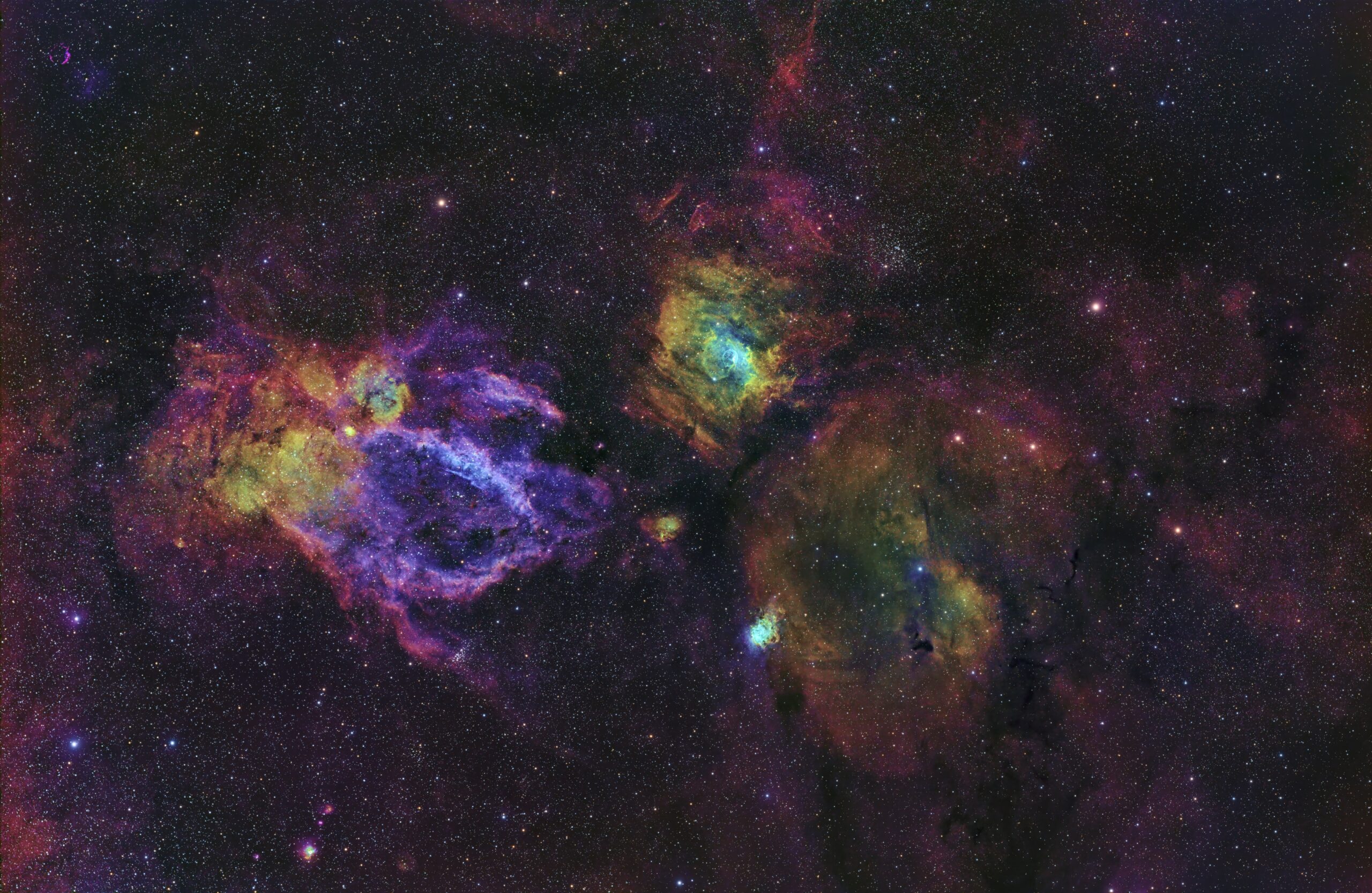
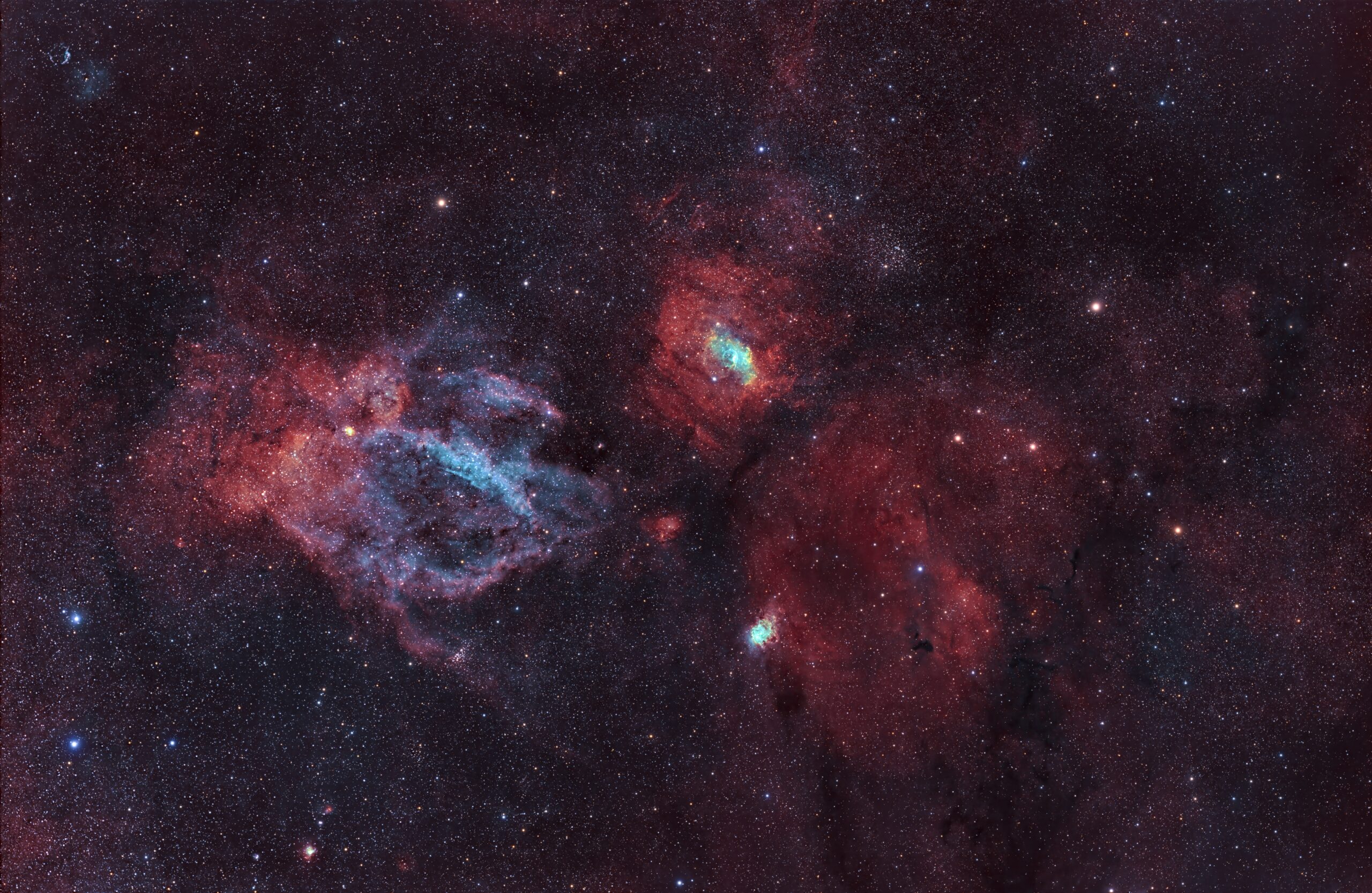
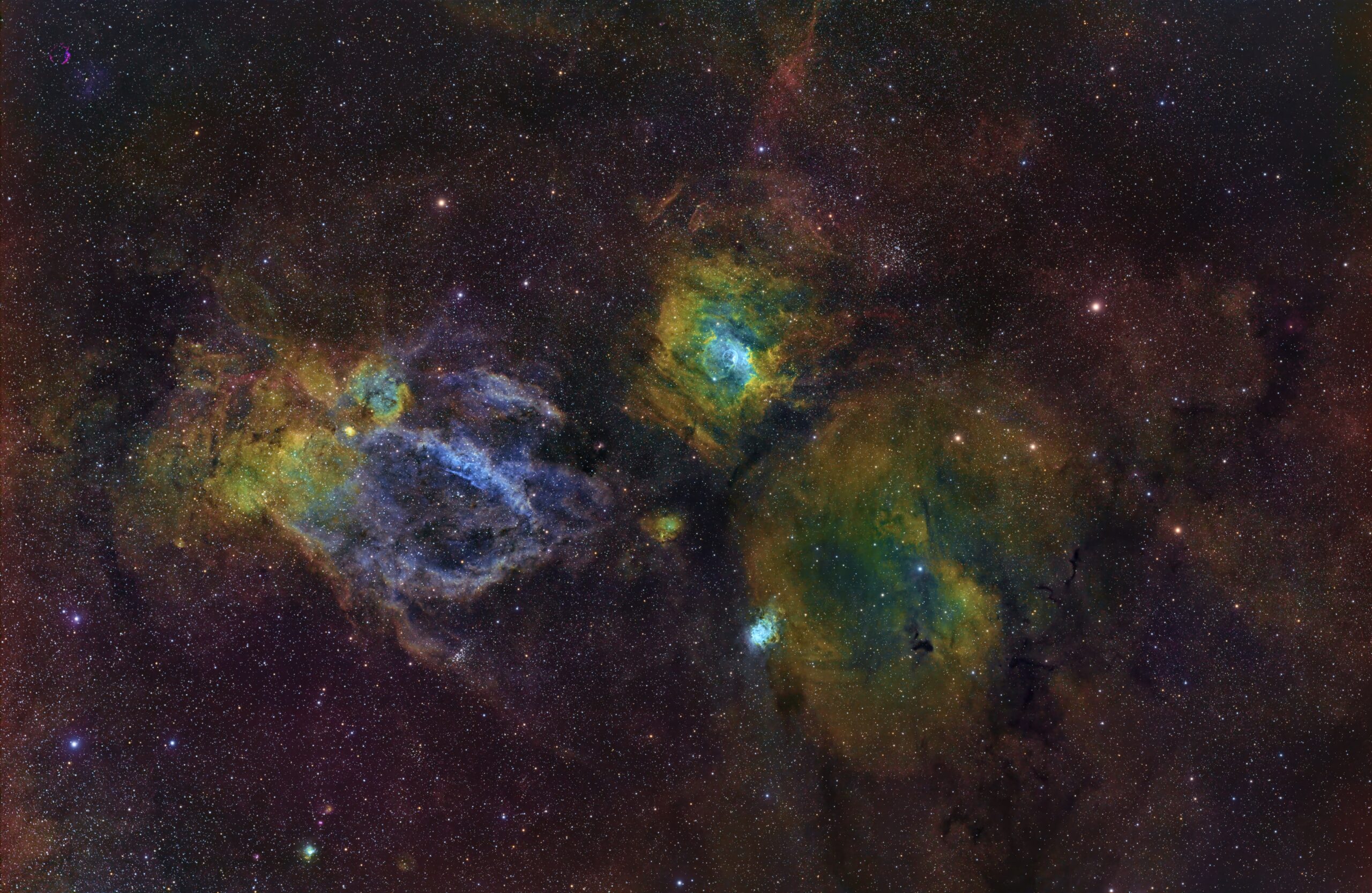
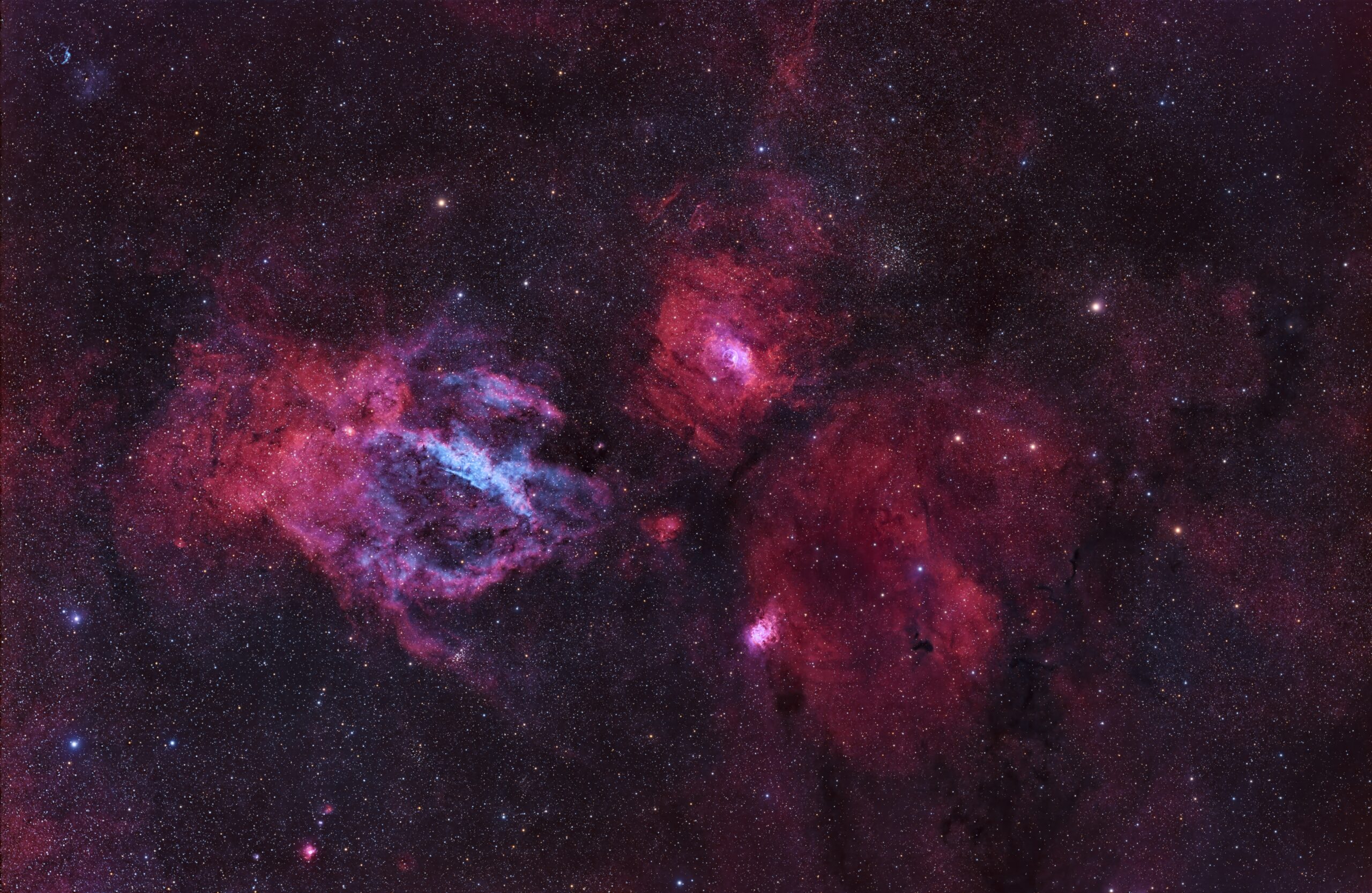
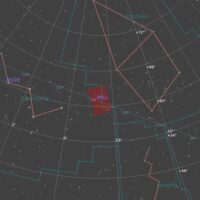
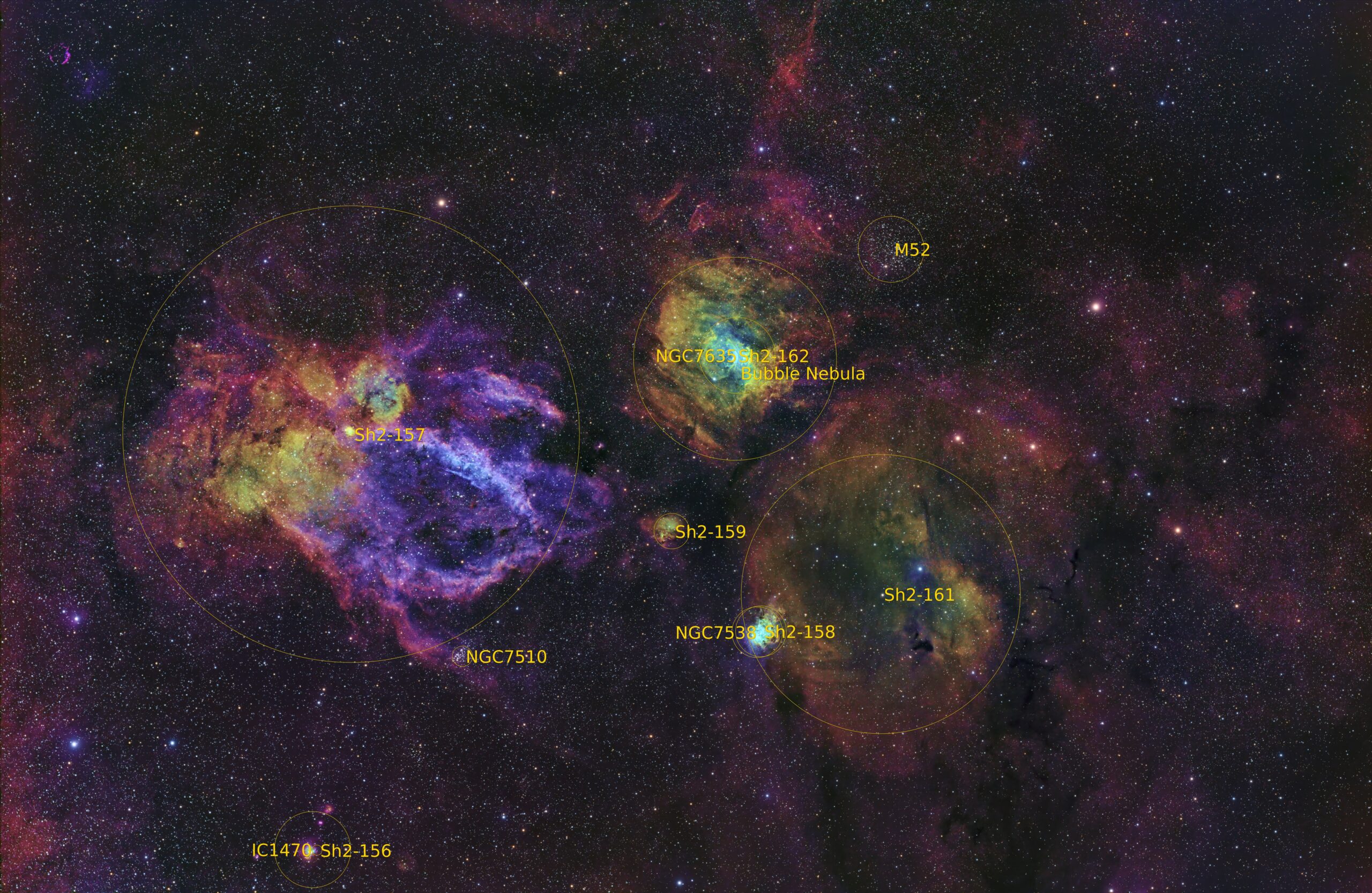
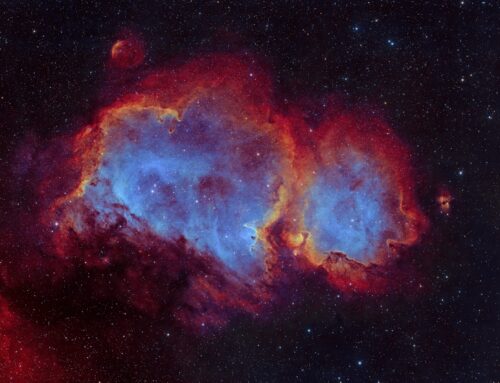

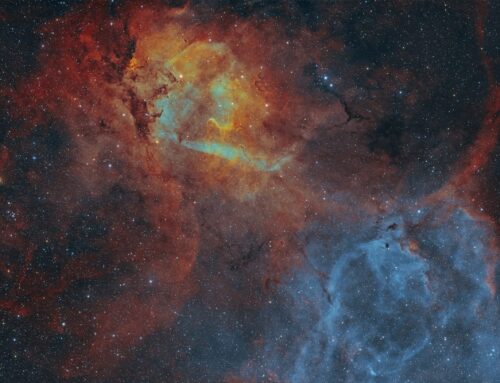
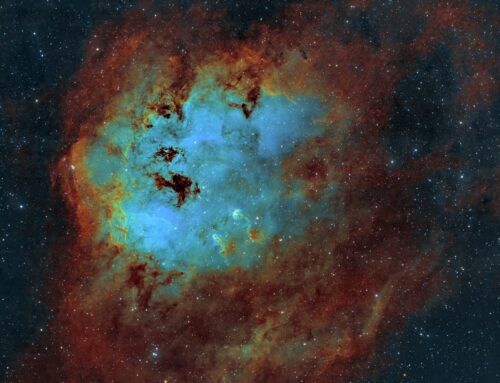

Leave A Comment